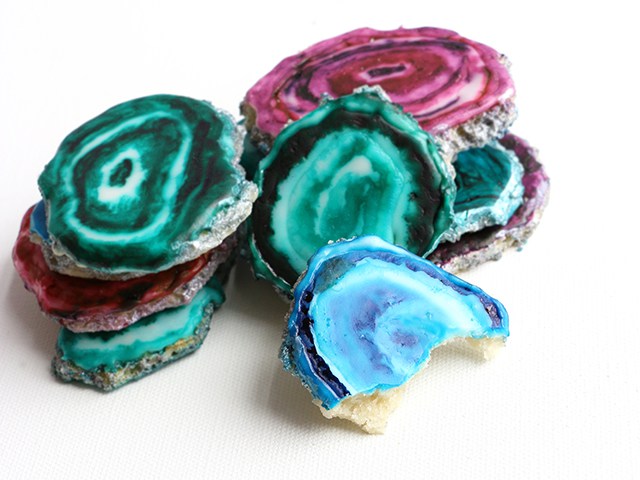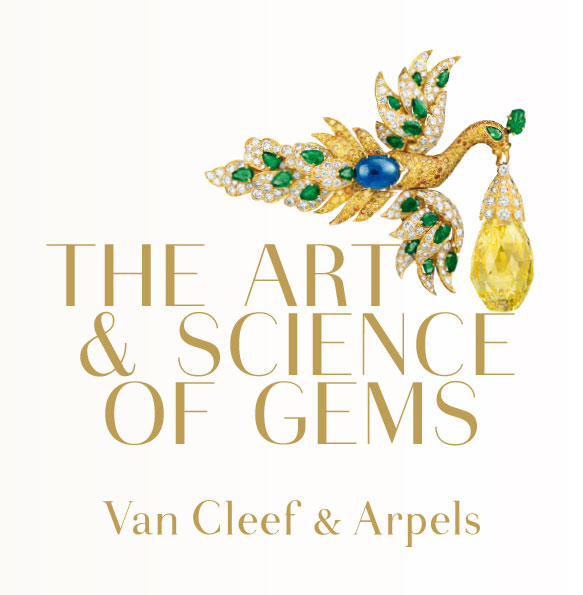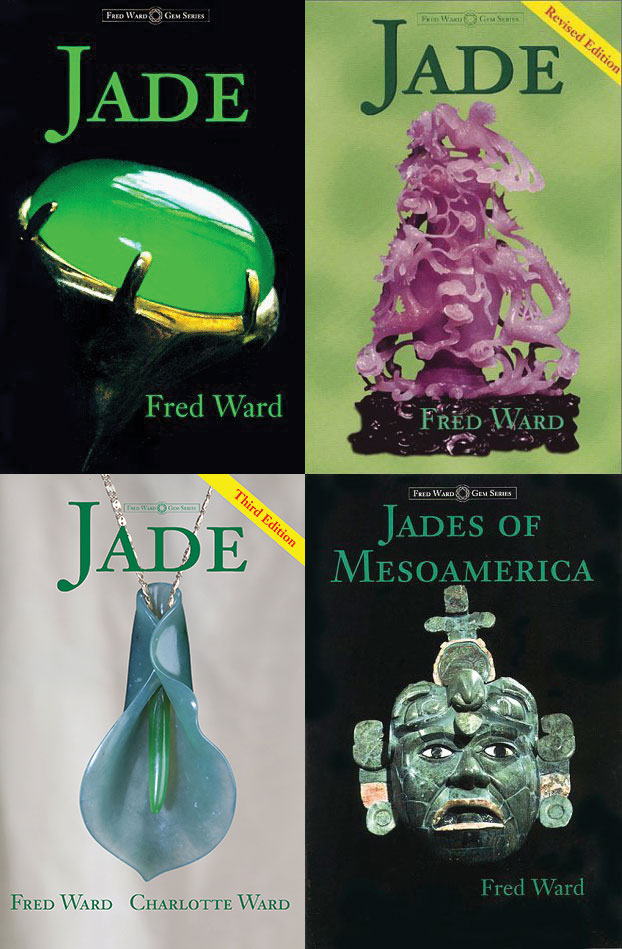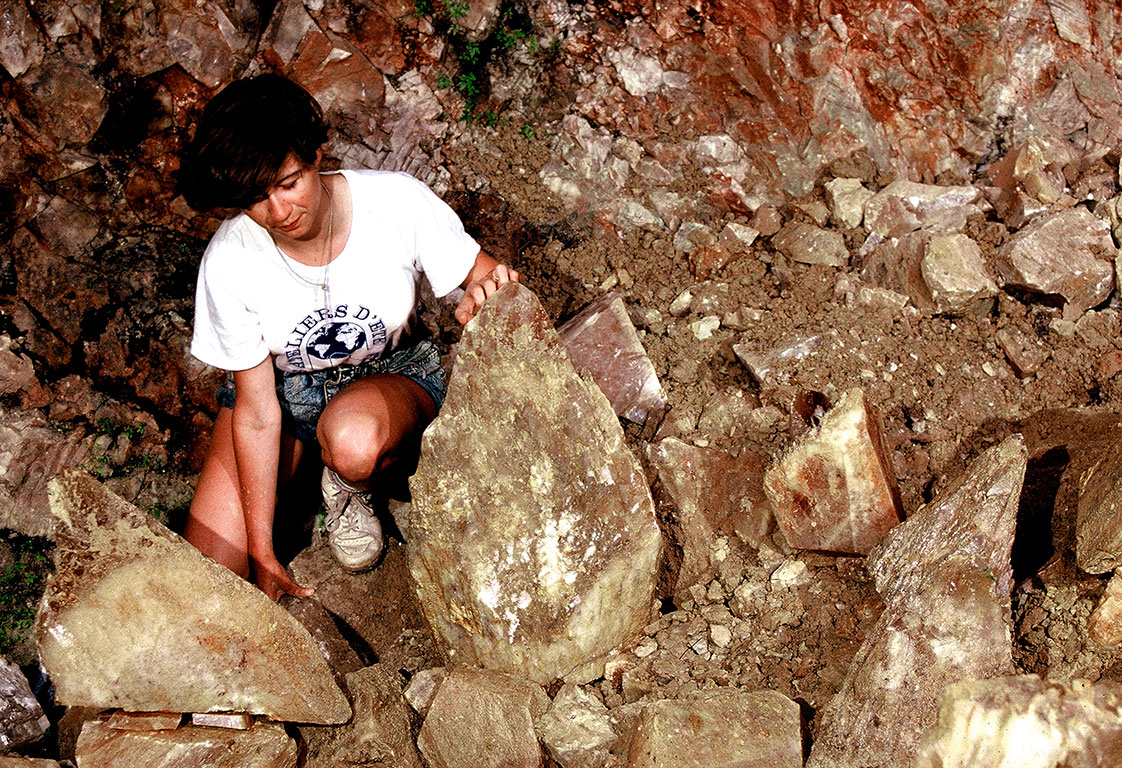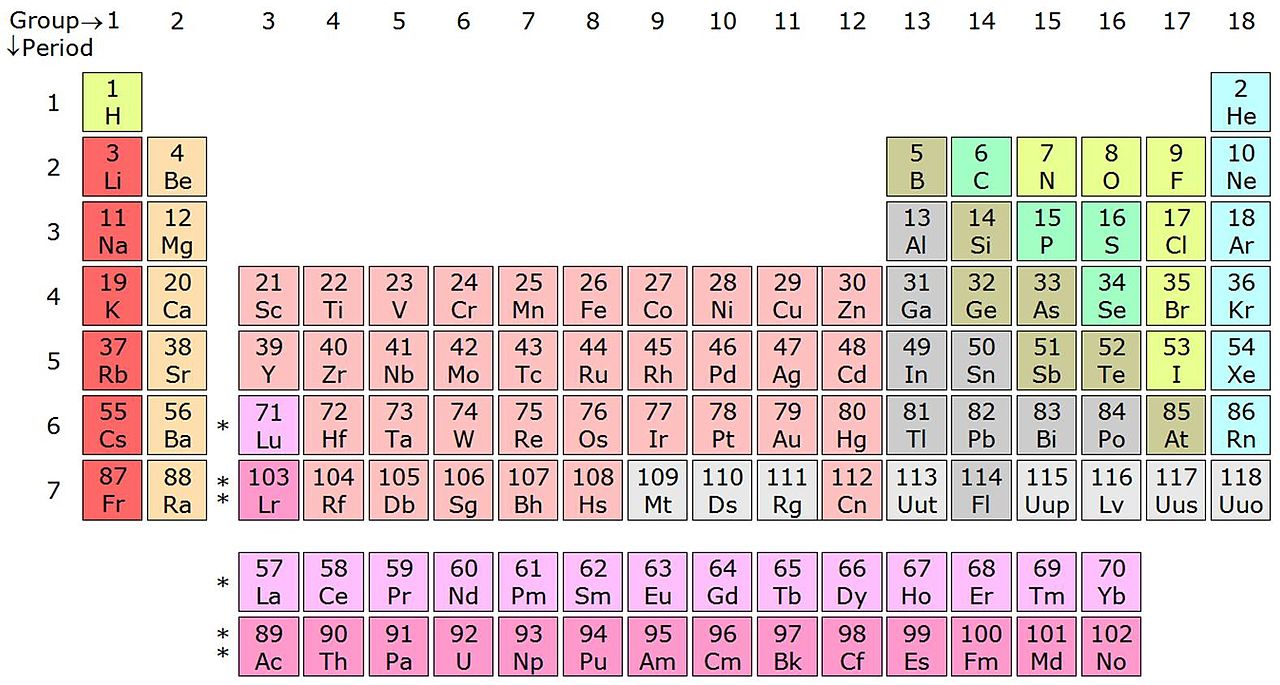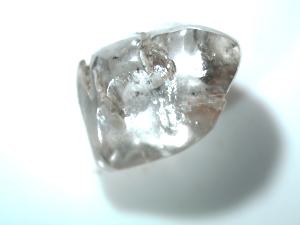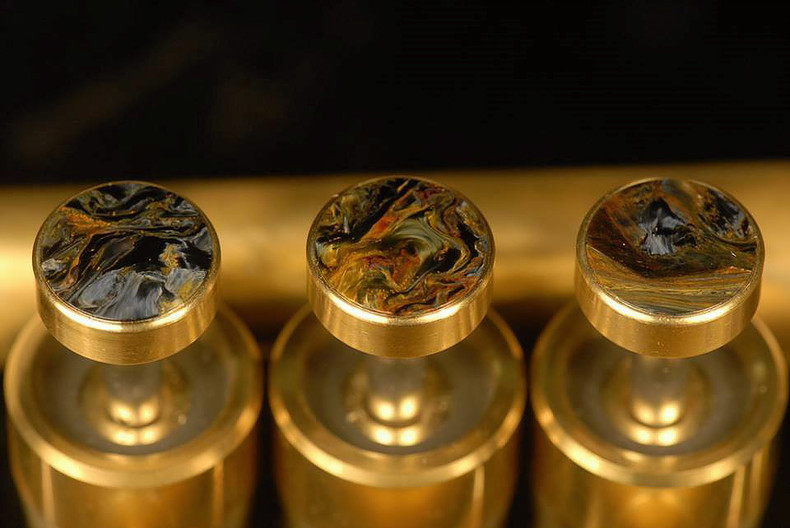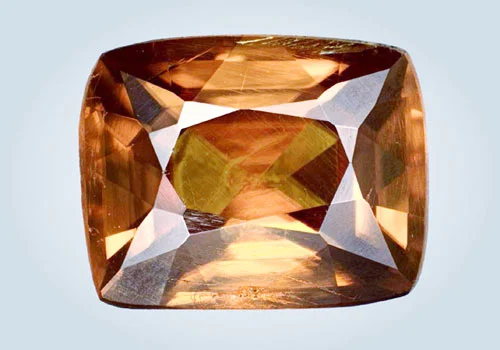August 2016
Recently, the U.S. television program Today featured on its food blog "Wedding cakes that rock!" (Our readers will recall the geode cake we posted in our February newsletter.) Today also featured agate-lookalike cookies (above), the creation of Alana Jones-Mann, who provides step-by-step instructions on how to do it yourself. Yum!
Table of Contents
Shows and Events
- Dallas Mineral Collecting Symposium: Aug. 19–21, 2016
- Van Cleef & Arpels: The Art and Science of Gems thru Aug. 14
- A Night Among Gems: Aug. 17, 2016
- Denver Fine Mineral Show: Sep. 14–17, 2016
- Scenes from Sainte-Marie
- What's Hot In Tucson 2016
Pala International News
Passing…
Minerals and Mineralogy News
Industry News
Pala Presents
Recycle Bin
- "Not an option…"
- When the Rough Gets Going the Going Gets Rough
- Brass Buttons
- New Species from Mogok: Kyawthuite
For Fun
Editor: David Hughes
Shows and Events
Dallas Mineral Collecting Symposium, Aug. 19–21, 2016
The Dallas Mineral Collecting Symposium moves to the Charles W. Eisemann Performing Arts Center this year in August. The speaker lineup is listed below. Mineral photographer Joe Budd will be available at the adjacent Renaissance Hotel. Schedule a time with him to drop off your specimens during the symposium.
Van Cleef & Arpels: The Art and Science of Gems
ArtScience Museum, Singapore, through August 14, 2016
Remember how people shook their heads when hotel honcho Steve Wynn opened a no-host art gallery in Las Vegas' Bellagio in 1998? Who would pay admission in the City of Freebies? Well, the Bellagio Gallery of Fine Art was such a success, it had to be doubled in size eight months later. Fast-forward to 2011 when Singapore's Marina Bay Sands hotel opened the unique ArtScience Museum, the first of its kind, with lotus-like architecture by Moshe "Habitat 67" Safdie. The lotus petals actually are ten "fingers" that contain gallery spaces. Five years later, the museum hosts the impressive oeuvre of a 110-year-old Maison d'haute joaillerie.
The peacock-like brooch displayed in the show's logo transforms to winged earrings and brooch or 96.62-carat diamond pendant. It was crafted in 1971–1972 from gold, emerald, sapphire, white and yellow diamonds. The 96.62-carat briolette-cut yellow diamond dangling from the avian's aperture formerly was owned in the 1930s by Polish opera singer Ganna Walska, who couldn't sing, inspiring Orson Welles to create the character of Susan Alexander in Citizen Kane. Interestingly, Walska owned an estate in Montecito, California that she named Lotusland. (Photo: Patrick Gries © Van Cleef & Arpels)
The exhibition is Van Cleef & Arpels: The Art and Science of Gems, a first for the Maison. It is a collaboration by ArtScience Museum, Van Cleef & Arpels, which provided more than 450 items of jewelry from its own and private collections, and the National Museum of Natural History in Paris, which loaned over 250 mineral specimens. Both areas of interest are represented by multiple themes.
In Collection, the Maison explores Couture, Abstractions, Influences, Precious Objects, Nature, Ballerinas and Fairies, and Icons. The Beauty of Science themes are History of the Earth, Pressure, Temperature, Transport, Water, Oxygen, Life, and Metamorphism.
For a visitor's view of the exhibition, lavishly illustrated with his photographs, see Jerome Lim's blog, The Long and Winding Road. The show ends August 14, 2016.
Shown here, from The Beauty of Science, is a malachite (cut and polished). Tourtscheninowski, Ural Mountains, Russia. Former collection of the King's Cabinet of Natural History, MNHN Collection, Paris. (Photo: François Farges © MNHN Collection)
A Night Among Gems: Aug. 17, 2016
Aaron Celestian, the new Associate Mineralogy Curator of the Natural History Museum of Los Angeles County, was introduced to its members and the public in the June/July edition of Naturalist, the museum's newsletter. Just as researchers are looking into methods of carbon sequestration, Celestian's prior research has been heavy metal deactivation. He "helped to develop a mineral that neutralizes a toxin found in radioactive soil," according to the Naturalist profile. "Now, children in Fukushima, Japan, which in 2011 suffered a nuclear disaster, can eat their vegetables grown in heavily contaminated soil and not get sick."
Although the NHM gem and mineral collection is the largest in the Western U.S., Celestian plans to increase the holdings, not only for visitors but for research purposes. And visitors can get a chance to meet the curator at a gala "A Night Among Gems" hosted by the GIA Alumni Association, Los Angeles Chapter (among others), Wednesday, August 17, at the museum. Information is available here.
Denver Fine Mineral Show: Sep. 14–17, 2016
Pala International will exhibit at the third annual Denver Fine Mineral Show in nearby Golden. This year the Fine Mineral Show overlaps with the 49th Annual Denver Gem & Mineral Show at the Denver Mart Expo Hall, September 16–18.
Cover star for the Denver Fine Mineral Show is a smoky quartz with amazonite, photographed by Tom Spann. It was discovered by Joe Dorris and family in Teller County, Crystal Park area, Colorado.
- When: Sept. 14–17, 2016
- Where: Denver Marriott West, 1717 Denver West Bl., Golden
- Room 219
- Hours:
Wed.–Fri.: 10 a.m.–6 p.m.
Sat.: 10 a.m.–5 p.m. - Admission: Free and open to the public
We look forward to seeing our many friends there.
Visit the Pala International Show Schedule for future events.
While in the Denver Area…
- In Golden be sure to take in the Colorado School of Mines Geology Museum. For more on the museum, see "Glittering in Golden" from our April newsletter.
- In Denver visit the Coors Mineral Hall of the Denver Museum of Nature and Science.
Scenes from Sainte-Marie
Mineral & Gem à Sainte-Marie-aux-Mines was held June 23–26 this year. Below are some of the sights.
Image anthology of the 2016 Mineral & Gem à Sainte-Marie-aux-Mines by Terralia-Concept.
What's Hot In Tucson 2016
BlueCap Productions has just released What's Hot In Tucson 2016, highlighting the offerings of thirty-four mineral dealers as well as the display of the Mineralogical and Geological Museum of Harvard University. The video visit goes to the Tucson Gem and Mineral Show as well as the elite Westward Look Mineral Show and its Collector's Day featuring the Arizona collection of Evan A. Jones. Pala International is included on Disc 2 of the nearly five hours of coverage.
An HD digital version of the documentary is available for streaming and/or download. For the physical DVD, visit the BlueCap website. To receive a 10% discount, be sure to enter the code palaintl when you're asked for it while ordering.
Anton Watzl Minerals shares their new pieces with us at the Westward Look Show. For more great mineral coverage, get your copy today.
Pala International News
Pala's Featured Specimen
This time we feature something that appeals to the connoisseur on so many levels. Matrix gwindel specimens of this caliber are quite rare. What is very nice about this piece is it has a double-terminated single crystal smoky in front of the gwindel. The clusters of quartz crystals surrounding it are all terminated and sit on a white feldspar matrix. The gwindel itself is perched on the side, bending and twisting toward the center. It is well viewed from every angle.
Crystal clear. Smoky quartz gwindel from Zinggenstöcke, Switzerland. The main gwindel crystal is 4.5 cm tall x 4 cm wide. The whole specimen measures 10.2 cm x 9.1 cm. (Photo: Mia Dixon)
Interested? Contact us.
Passing…
Fred Ward (1935–2016)
Photographer and author, gemologist and dealer Fred Ward has died at the age of 81. Gemstone and mineral lovers likely are familiar with his imagery and books. He and his wife Charlotte Ward authored the Fred Ward Gem Series, aided by son Christopher (photography), daughter Lolly (editorial), and son David (layout design). Seeds of the nine books in the series were Ward's original spreads on gemstones for National Geographic. And the books were updated from time to time; the third edition of Jade was issued just last September. The series dates back to the early 1990s, so titles received accolades from others who have since departed, like Dr. Edward Gübelin and Richard Liddicoat. Publications and institutions also heaped praise: Journal of Gemmology, Australian Gemmologist, Van Cleef & Arpels, JCK Magazine, National Jeweler, and Lapidary Journal.
In October 2008, Pala International's own Gabrièl Mattice, in discussing a world-class 56.50-carat cat's eye chrysoberyl, suggested readers pick up the Wards' then-just-released Phenomenal Gems. This volume benefited from the expertise of physicist Dr. John Emmett, an authority on gemstone treatment, as well that of John S. White, former Curator of the Smithsonian's National Mineral and Gem Collection.
Fred Ward's four books on jade—two of his nine-volume series on gemstones—reflect his particular love of this stone. Clockwise from top left, the first edition (1996), the second (2001), Jades of Mesoamerica (1997), and the new edition of Jade (2015). The Wards issued 19 books or revisions during the 24 years since the series launched in 1992.
Of course, Fred Ward's pursuits were not limited to the wide world of gemstones. Earlier in his career, he contributed to many periodicals, including the weeklies Time, Life, and Newsweek. Ward's photos were fodder for mass media, of course: millions of eyes seeing the exact same thing at the same time, whether it be the Beatles' first tour, Fidel Castro harvesting grapefruit, Elvis Presley relaxing, or Cambridge civil rights leader Gloria Richardson at the point of a bayonet (all included in Ward's Time magazine obituary). But the intimacy of his images and writing are borne out by other work: Golden Islands of the Caribbean (1972); Portrait of a President (1975), on Gerald Ford, with Time White House correspondent Hugh Sidey; The Home Birth Book (1977), authored with wife Charlotte, and with an introduction by pioneering anthropologist Ashley Montagu (Natural Superiority of Women, Elephant Man); Inside Cuba Today (1978; L.A. Times: "Although [Ward] grinds many axes, he chops down few trees" and a reprint is in the works). Having traveled to more than 130 countries, Fred Ward can be called the Indiana Jones of photojournalism, according to a rich tribute from Ward's family issued by AGTA, which also mentions that he earned his Graduate Gemologist diploma from GIA in only ninety days—a record for the school. His photographs appear on our sibling website in articles like "Burmese Jade: The Inscrutable Gem" and "A Celebration of Jade."
Frederick N. Ward (1935–2016) died of Alzheimer's disease on July 19 at his home in Malibu, three days after his 81st birthday. He is survived by Charlotte, his wife of 58 years, and their four children.
Fred Ward Remembered
John S. White
Fred was a dear friend. Merle and I had some delightful times with him and Charlotte. Fred was a great raconteur and had marvelous stories to tell from his world travels and encounters with important world figures. My all-time favorite photo of Fred's was his shot of Liz Taylor wearing the Bulgari emerald necklace Richard Burton gave her. He related that Liz was just about the only subject of his who didn't blink when the camera flashed. We will miss him so very much.
Fred Ward with Elizabeth Taylor wearing the emerald necklace by Bulgari she received as a wedding present from Richard Burton in 1964. (Photo © Christopher Ward/Award Agency)
Richard W. Hughes
A brief anecdote. After my first visit to the jade mines of Burma in 1996, I gave a lecture on that odyssey at the Foreign Correspondents' Club in Bangkok. A German video journalist was in attendance, and afterwards said he'd like to make a film up there. And so we did. I brought Fred along to shoot stills. The process was a nightmare almost from the moment we left Mandalay. The Burmese military assigned us a Major who had never been to the area (and it seemed did not have much experience outside his base in Yangon). On about Day 3 we arrived at about 19:00 in Makapin, the first jade mining village. It was like a miniature Las Vegas, full of gambling (which of course was illegal). We all piled out and started shooting. The Major was clucking and tut-tutting like a nervous hen. He eventually declared that we must leave immediately. So it was back in the cars (Subaru wagons, yet another mistake). We drove an hour up the road, only to arrive at Hweka, another jade mining village, where an even bigger gambling operation was in full tilt. So the Major again declared that we would have to leave.
Fred Ward engaged in his life's work, Hpakangyi jade mine, 1997. See this article on the environmental devastation of jade mining posted on his Friends of Jade website. For a detailed look at jade mining see "Heaven and Hell: The Quest for Jade in Upper Burma" by Richard W. Hughes and Fred Ward. (Photo: Richard W. Hughes)
At this point I suggested that would be a bad idea, as the clutch in one of the Subarus was shot and I knew the road was very steep. But Major knew best. We piled into the cars, got halfway up the hill, and burned out the clutch. So we rolled back down to Hweka and the Major herded us into the local temple and made us bed down there!
Fred and I waited until the Major was asleep (in the car) and we went back into the village and were invited into a house full of miners and had a great time until the wee hours of the morning. Sadly, that was one of the few times we were able to escape the Major's "clutches."
We eventually made it to Hpakan and after many days more of frustration, ended up back in Hweka. At that point, Fred turned to me and said: "In the words of the immortal Hollywood starlet, who do we have to screw to get off this film?"
I'll never forget that moment.
Mineral and Mineralogy News
Giant Calcite in Portugal
By Alain Martaud
Our good friend Alain Martaud will be known to our readers as the curator of The Prestige Exhibition, "Origins: Stones and Wines," at this year's show in Sainte-Marie-aux-Mines. He also is the author of the trilingual monograph Les Minéraux de Sainte-Marie-aux-Mines.
Caroline with geode, August 1988. (Photo: Alain Martaud)
Alain was kind enough to write up his recollection of his visits over the years to a remarkable mineral locality in Portugal.
Dinosaur-Era Bird Wings in Amber
Scientists have discovered wings from dinosaur-era birds in amber taken from Kachin State in Burma. The wings are so well preserved, details such as feather alignment, hair follicles, and even coloring were observed. The wings, 2–3 cm long, were examined using laboratory methods like synchrotron X-ray micro CT scanning. Comparison with other bird specimens led the scientists to date the birds to 99 million years ago, the Cretaceous period (145.5–65.5 million years ago). Usually only feathers are captured in amber, but these wings allowed the scientists to examine the birds' anatomy from all angles, unlike impressions of feathers found in limestone.
This photomicrograph shows an upturned claw at right and a pale spot in the plumage at left. Both spots and stripes were seen in the fossils' feathers. (Photomicrograph: Ryan C. McKellar, Royal Saskatchewan Museum)
Chemistry News
Naming Rites
Atomic numbers 113, 115, 117 and 118 are represented by placeholder symbols until their naming is final.
Four chemical elements were added to the periodic table in January, but they were designated by temporary names and by the number of protons in each of the four atoms. After a five-month public-comment period, if no objections are encountered, the new elements will be:
- Nihonium (atomic number 113) is named for Nihon, the name for Japan in Japanese. The atom was discovered at the RIKEN Nishina Center for Accelerator Science in Wako.
- Moscovium (atomic number 115) is named after the Moscow Oblast, location of the Joint Institute for Nuclear Research in Dubna, Russia at which the element first was synthesized.
- Tennessine (atomic number 117) is named after the U.S. state of Tennessee due to key material produced in the Oak Ridge National Laboratory and contributions by Vanderbilt University.
- Oganesson (atomic number 118) pays homage to Yuri Oganessian, the nuclear physicist whose team discovered flerovium and No. 118.
According to a June 8 BBC story, element names "can reflect a mythological concept, a mineral, a place or country, a property or a scientist." The elements are the first to be added to the periodic table since 2011.
See also the item about the naming of a new mineral species, below.
Carbon Cache
I need a fix 'cause I'm going down
— "Happiness Is a Warm Gun"
Carbon capture and storage (CCS) is sort of like hydraulic fracturing in reverse. Rather than pulling carbon out of the ground, the idea is to pump it underground, cap it, and forget about it, with that much less carbon to spoil the atmosphere. The trouble is, previous CCS experiments have pumped the CO2 into sandstone or into saline aquifers, and the question has nagged, What if the caps leak?
Enter the CarbFix project, whereby researchers have partnered with a geothermal power plant near Reykjavik, Iceland, combining CO2 with water and pumping that hundreds of meters underground, into volcanic basalts. The solution reacted with the basalt, with the end product being solid calcium and magnesium carbonates. The researchers detected no leakage whatsoever. And the process is fast. "We find that over 95% of the CO2 injected into the CarbFix site in Iceland was mineralized to carbonate minerals in less than 2 years," the study's abstract states. It may be fast, but it ain't cheap, as explained in a June 9 BBC story. Just the second C of CCS—capture—of CO2 at the source, like power stations, is expensive. And it uses a lot of water; only 5% of the solution pumped down is CO2. More experimentation is needed.
Lead investigator Juerg Matter also points to two other carbon sequestration projects:
Rock Eaters
Cover Star: Colored transmission electron micrograph of Shewanella oneidensis nanowires. March 2015 edition of Microbe. (Image credit: Sahand Pirbadian in Mohamed El-Naggar's lab at the University of South Carolina)
Is there life on Mars?
— David Bowie
Scientists are working with microbes that thrive (perhaps too strong a word) in the extreme environments of gold mines, deep sea vents, and sea floors, leading to speculation that such life-forms might live in similar habitats on Mars. A June 21 story in Quanta Magazine by Emily Singer shines the light on these lithoautotrophs—rock eaters—in their dark places. The microbes flout the rules of science with their ability to reap energy from inorganic substances—iron, sulfur, manganese—surviving on electricity.
As Singer explains, the structure of cells as we knew them actually kept electrons out. But these microbes happily ingest them, with help of an enzyme. The microbes are grown on electrodes, a method that opens up laboratories' options, which were closed to all but two percent of earth's microorganisms previously. Variations in electrode voltage lure different microbes. Researcher Annette Rowe published a paper last year that identified thirty new varieties. Biophysicist Moh El-Naggar likened the study of these microbes to the infancy of neuroscience, like using electrodes to cause frog muscles to twitch. With enough probing, the origin of life on earth could be lurking somewhere below the surface.
Siberian Slump
For decades since its deforestation in the 1960s, an area of Siberia has been sinking. Known as the Batagaika Crater or Megaslump, it is a gash 1 kilometer in length and up to 100 meters in depth. It grows at the rate of 15 meters a year, as reported on May 18 in The Siberian Times.
The slump is a laboratory in a couple of ways: it allows scientists to date layers of soil thought to be 120,000 years old, but now determined to be 80,000 years older. Plant samples also are gathered. Remains and mummies of animals also have been excavated. The slump, known as a "thermokarst depression," is not the only one; others are found in Canada. But this one is much deeper. It allows also for the study of ancient ice.
This CNN report is from seventeen months ago, about permafrost craters in other parts of Siberia. Also see a recent Daily News video (with bionic narration) that includes many views of the Batagaika Megaslump.
Industry News
Amazing Geologist
World affairs got you down? Election put your head in the spin cycle? Fires and floods make you blue? Fire up Facebook and visit Amazing Geologist.
Pala Presents
Collecting Cards from the British Museum (Natural History)
Printed by Waterlow & Sons Ltd.
With Pala Presents, we offer selections from the library of Pala International’s Bill Larson, who shares some of the wealth of information in the realm of minerals and mineralogy.
Last month, in our sibling publication, Palagems Reflective Index, we featured the last group of thirteen from forty mineral and gemstone postcards published by the British Museum (Natural History), cards 16–17, 29, and 36–45.
According to a story by postcard-collector John Taylor in the Jan/Feb 2009 edition of Rocks & Minerals, these cards were printed in about the 1920s by Waterlow & Sons. The firm was an engraver of currency, postage stamps, and stock and bond certificates. James Waterlow's son Sydney (1822–1906) eventually became Sheriff of the City of London, during which time he was knighted, and later became that city's Lord Mayor.
Editor's Note: Somewhat late in the process of digitizing these cards it was pointed out that the institution formerly known as the British Museum (Natural History) now is known as the Natural History Museum, London. It should not be confused with The British Museum.
This card is notable because it does not feature any faceted material. A gap in the institution's holdings, perhaps?
The Edwardes Ruby, top left, was gifted to the British Museum (Natural History) in 1887 by polymath-philanthropist John Ruskin (1819–1900). The stone was named after Major General Sir Herbert Benjamin Edwardes who in mid-century had helped the East India Company maintain control in the Punjab region, bringing an end to the Sikh Empire. Ruskin's ideas influenced figures as diverse as mining mogul Cecil Rhodes and socialist Edward Carpenter. In what Wikipedia likens to a nineteenth century blog, Ruskin wrote a series of "letters to the workmen and laborers of Great Britain," one of which critiqued a James McNeil Whistler painting. The artist sued for libel, and won, but during the trial the painting was displayed upside down.
Ruskin's mineral collection is discussed in the Introduction to Deucalion and Other Studies in Rocks and Stones, collected in The Works of John Ruskin, Volume 26, by the volume's coeditor Edward Tyas Cook. The book's frontispiece is Ruskin's watercolor illustration of an Australian opal in matrix. Under the subhead Catalogues of Minerals (1883–1886), Cook writes that in 1883 Ruskin began overhauling his collection with the intent of donating some to institutions with the goal that mineralogy would become a subject of elementary education just like botany. He also began completing his cataloging of the collection.
Ruskin had about three thousand specimens, purchased largely from dealers during his travels, including the Edwardes Ruby above and the Colenso Diamond, pictured below. The ruby, presented "In Honor of the Invincible Soldiership and Loving Equity of Sir Herbert Edwardes' Rule by the Shores of Indus," was obtained for £100 (about $13,000 in 1887). The diamond was bought from a dealer named Nockold for £1000. It also was gifted in 1887 to the museum, where it had been on loan. The museum's Keeper of Mineralogy (later the museum's director) Lazarus Fletcher suggested it be named after Ruskin. "The Diamond," Ruskin replied, "is not to be called the Ruskin, nor the Catskin, nor the Yellowskin, diamond. (It is not worth a name at all, for it may be beaten any minute by a lucky Cape digger.) But I will give it to the Museum on the condition of their attaching this inscription to it:—
The Colenso Diamond
Presented in 1887 by John Ruskin
"In Honor of his Friend, the loyal
And patiently adamantine
First Bishop of Natal."
Recycle Bin
As we often do, here we offer two July items from our sibling e-publication, Palagems Reflective Index.
But before we do, here's a related new item.
"Not an option…"
Nine-year-old Grace Houston of Forestdale, Missouri went with her family on vacation to Arkansas's Crater of Diamonds State Park on July 22. A budding geologist, Grace's trip to the park was a surprise gift from her family. She was so excited she vowed to stay out in 100-degree heat a second day if she didn't hit pay dirt, which consisted of wet sifting with her grandmother the next day.
Grace found a 1.53-carat white diamond, and immediately she received unsolicited suggestions. A necklace? Not an option, she insisted. An engagement ring? "No! I would never put such a rare and special and precious thing into an expensive piece of jewelry!”
Had that been a 1,109-carat diamond? Read on…
When the Rough Gets Going the Going Gets Rough
The 1,109-carat Lesedi La Rona rough diamond failed to meet its reserve price at auction June 29, so it will be retained by Lucara Diamond Corp. The pre-sale estimate was $70 million, but bidding only reached $61 million. National Jeweler posted a post mortem the next day.
Lucara CEO and President William Lamb said that no rough diamond ever had been sold via auction. Pala International President Bill Larson for years has advocated rough diamonds be sold as specimens, and Lamb seemed in tune with this line of thinking. He told National Jeweler that the firm was interested in seeing if there might be a market for one-of-a-kind diamonds, just as there is for collectible fine art. The public simply isn't accustomed to seeing value in an unpolished diamond, he said, therefore missing the stone's "historical significance." Also partly to blame could be the successful Brexit vote, though Lamb downplayed the notion.
National Jeweler also referred to two independent reports commissioned by Sotheby's regarding the stone, some details of which were made public: experts think the rough could yield a diamond larger than the 530.20-carat "Great Star of Africa" and that polished diamonds from the rough will be D, the highest on GIA's color scale.
Brass Buttons
Normally we don't share lapidary news with our mineral-collecting readership, but we did want to highlight some of the mineral material that is being employed in these finely crafted instruments.
The other day a friend asked your editor, "Do you cover semi-precious stones and minerals?" "Yes," I answered. We got out my smart phone and he directed me to the David G. Monette Corp., purveyor of fine brass instruments.
Let this picture say it all (or much of it):
Brass instrument fingerbuttons inlaid with pietersite. (Photo courtesy David G. Monette Corp.)
For the past thirty-three years, Dave Monette and his Portland, Oregon team of musician/craftspeople have been brassmakers to the stars, and anyone else who appreciates the finest in design and workmanship. Monette creates the fingerbuttons in his home lapidary studio. Before he started building brass, Monette worked for a few years repairing all types of wind instruments, so he obviously came across the good, the bad, and the ugly. This experience gave him insight regarding the state of the art: when making trumpets, flugelhorns and the rest, resonance is crucial, and nothing that stands in the way of this goal finds its way into the Monette model. While this may sound utilitarian, something else insinuates itself in instruments and mouthpieces with Sanskrit names like Prana (breath, life-principal) and Raja Samadhi (kingly union). "The unusual names chosen for some of what we make are taken from the Yoga Sutras," Monette told me. "Since musicians and artists on their best days are all about communication and hopefully transcendence, we sometimes pick names that reflect and encourage this. We enjoy working with players one on one with a variety of techniques to assist them in realizing enhanced communication and higher states of inspiration." Makes perfect sense to me, who as a musician in an earlier incarnation found myself sometimes transported while performing to a rare realm of mind-body-spirit.
Monette and his team work with each client individually in the course of crafting every instrument, and in some cases this itself is taken to a higher plane. Take, for instance, the Elysian Trumpet, so rich in its story that we point to two "making of" videos (one and two). The trumpet was commissioned by Irvin Mayfield, founder of the New Orleans Jazz Orchestra, but its design elements are a larger homage to the Crescent City's devastation and resilience in the face of Hurricane Katrina. The meandering turquoise inlay on the horn's mouthpiece, which charts the course of the Mississippi River, alone took Portland goldsmith Tami Dean forty to fifty hours to accomplish.
See also: a one-minute video spotlighting the opal fingerbuttons on this horn.
But back to those fingerbuttons and other lapidary luxuries. While he's been making trumpets since 1983, Monette told me, "Lapidary work started for me about ten years ago. I bought basic equipment and started cutting. I was always fascinated with lapidary work and it was a dream come true to start doing inlay to celebrate the player/instrument relationship in an new way." In the video above, Monette takes viewers through the making of a second decorated horn, but feel free to skip forward to 8:05, where it is "lapidary weekend at the Monette lapidary shop." For the first time in his career, Dave Monette crafts a turquoise inlay for a valve slide ring. He even shows us the tools he used. Then (at 10:24), on to some gorgeous white opal that is used in mosaic fingerbuttons.
Brass instrument fingerbuttons inlaid with meteorite material. See also this four-minute fingerbutton slideshow. (Photo courtesy David G. Monette Corp.)
Brass instrument fingerbuttons inlaid with dinosaur bone and wooly mammoth tooth. Matching cufflinks would be classy. (Photo courtesy David G. Monette Corp.)
There's a lot more to see and read about the art of brass (and buttons) at Monette.net. And more to see and hear at the MonetteCorporation Youtube channel.
New Species from Mogok: Kyawthuite
U Kyaw Thu of Macle Gem Lab in Yangon (right) and friend discuss painite locations with Bill Larson, August 2005. (Photo: Bill Larson)
On July 11, Pala people read with interest a Myanmar Times story with the headline, "'World's rarest gem' named after Myanmar mineralogist." That mineralogist is U Kyaw Thu, a dear friend of Bill Larson, who has worked with Pala International for some twenty years.
Before telling the discovery of the new gemstone material, some background. Earlier this week, Dr. Kyaw Thu reminisced about his dealings with Bill Larson.
Bill Larson, known as Burma Bill, is my good friend and a trusted person for me. I first met Bill as a young geologist/gemologist in Yangon about 15 years ago. At that time we established a very good relationship. We went together on a gem field trip with gem collectors to Mogok and discussed candidly many things about gems, mining, the origin of ruby and sapphire and their potential. Also, most of the gem and mineral dealers from Mogok already knew Bill and they love him. That was an amazing time!
At about the same time I met him I started my gem business. Over the years, Bill has shared much valuable knowledge of gems and minerals, suggestions and experiences with me, that are very useful in my gem-career life. He is an expert in gem world.
In January of 2010, while visiting the alluvial gem area at Chaung-gyi (Big Stream) just north of Mogok, Dr. Kyaw Thu purchased two waterworn crystals, one yellow and one orange, from a miner called "Kha-ne-say." Kyaw Thu suspected that the stones were scheelite because of their high density and lustre. After he faceted the two stones, he confirmed that the yellow one was scheelite; however, the orange gem had a different lustre and much higher density. Being unable to match its properties to those of any known gem, he sent the stone to the Gemological Institute of America (GIA) Laboratory in Bangkok. Lab personnel there were also unable to identify the gem, and arranged for X-ray diffraction and chemical analytical examination of the gem by Sunan Rangseekansong and Manop Tirarattanasompt at Chulalongkorn University. Their examination indicated that the orange gem matched synthetic BiSbO4. Subsequently, Dr. Kyaw Thu provided the gem to researchers for its detailed description as a new mineral species.
The holotype specimen, a 1.61-carat faceted gem, is deposited in the Natural History Museum of Los Angeles County under catalogue number 65602. (Photo: Dr. Kyaw Thu)
Kyawthuite (/cha: 'tu: ait/) is named for Dr. Kyaw Thu (b. 1973), a Burmese mineralogist-petrologist-gemologist with a Ph.D. from Yangon University (2007). He was on the staff of the Geology Department of Yangon University from 1998 to 2005 and has been the owner/operator of the Macle Gem Trade Laboratory since 2003. His Ph.D. dissertation, "The igneous rocks of the Mogok Stone Tract: Their distributions, petrography, petrochemistry, sequence, geochronology and economic geology," is a seminal work on the subject. Kyaw Thu has provided guidance for a number of scientific expeditions to the Mogok area and elsewhere in Myanmar. He has agreed to the naming of the mineral in his honor.
The new mineral and name have been approved by the Commission on New Minerals, Nomenclature and Classification of the International Mineralogical Association (IMA2015– 078). Kyawthuite is the subject of a paper in Mineralogical Magazine by Anthony R. Kampf, George R. Rossman, Chi Ma, and Peter W. Williams, abstract available here.
Congratulations to U Kyaw Thu on the prestigious naming of this new mineral!
For Fun…
— End August Newsletter • Published 8/2/16 —

